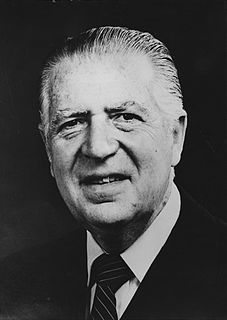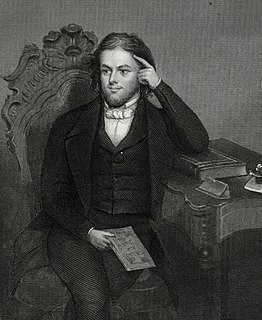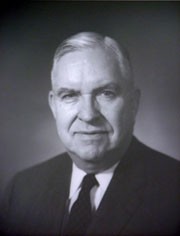
A seal is a device for making an impression in wax, clay, paper, or some other medium, including an embossment on paper, and is also the impression thus made. The original purpose was to authenticate a document, a wrapper for one such as a modern envelope, or the cover of a container or package holding valuables or other objects.

Anthony Schmalz "Tony" Conrad was an American video artist, experimental filmmaker, musician, composer, sound artist, teacher, and writer. Active in a variety of media since the early 1960s, he was a pioneer of both drone music and structural film. As a musician, he was an important figure in the New York minimalist scene of the early 1960s, during which time he performed as part of the Theatre of Eternal Music. He became recognized as a filmmaker for his 1966 film The Flicker. He performed and collaborated with a wide range of artists over the course of his career.

A piece of postal stationery is a stationery item, such as a stamped envelope, letter sheet, postal card, lettercard, aerogram or wrapper, with an imprinted stamp or inscription indicating that a specific rate of postage or related service has been prepaid. It does not, however, include any postcard without a pre-printed stamp.
Loaded language is rhetoric used to influence an audience by using words and phrases with strong connotations associated with them in order to invoke an emotional response and/or exploit stereotypes. Loaded words and phrases have significant emotional implications and involve strongly positive or negative reactions beyond their literal meaning.

Stephen Vincent Benét was an American poet, short story writer, and novelist. He is best known for his book-length narrative poem of the American Civil War, John Brown's Body (1928), for which he received the Pulitzer Prize for Poetry, and for the short stories "The Devil and Daniel Webster" (1936) and "By the Waters of Babylon" (1937). In 2009, The Library of America selected his story "The King of the Cats" (1929) for inclusion in its two-century retrospective of American Fantastic Tales edited by Peter Straub.

The Great Seal of the Irish Free State is either of two seals affixed to certain classes of official documents of the Irish Free State :

Fernando Belaúnde Terry was a Peruvian politician who twice served as President of Peru. Deposed by a military coup in 1968, he was re-elected in 1980 after twelve years of military rule.

Rufus Wilmot Griswold was an American anthologist, editor, poet, and critic. Born in Vermont, Griswold left home when he was 15 years old. He worked as a journalist, editor, and critic in Philadelphia, New York City, and elsewhere. He built a strong literary reputation, in part due to his 1842 collection The Poets and Poetry of America. This anthology, the most comprehensive of its time, included what he deemed the best examples of American poetry. He produced revised versions and similar anthologies for the remainder of his life, although many of the poets he promoted have since faded into obscurity. Many writers hoped to have their work included in one of these editions, although they commented harshly on Griswold's abrasive character. Griswold was married three times: his first wife died young, his second marriage ended in a public and controversial divorce, and his third wife left him after the previous divorce was almost repealed.

The presidential seal is a seal used by the President of Ireland to authenticate his signature on official documents. The Constitution of Ireland requires certain documents to be issued under the president's "hand and seal", and in other cases the seal is mandated by act of the Oireachtas. It is a single-sided "dry seal" impressed directly onto the fabric of the document, leaving a relief of its design without sealing wax or ink.

The current Constitution of Ireland came into effect on 29 December 1937, repealing and replacing the Constitution of the Irish Free State, having been approved in a national plebiscite on 1 July 1937 with the support of 56.5% of voters in the then Irish Free State. The Constitution was closely associated with Éamon de Valera, the President of the Executive Council of the Irish Free State at the time of its approval.

Alexander Hill Everett was an American diplomatist, politician, and Boston man of letters. Everett held diplomatic posts in the Netherlands, Spain, Cuba, and China. His translations of European literature, published in the North American Review, were influential for the Transcendentalism movement.
Legal citation is the practice of crediting and referring to authoritative documents and sources. The most common sources of authority cited are court decisions (cases), statutes, regulations, government documents, treaties, and scholarly writing.

Samuel Griswold Goodrich, better known under his pseudonym Peter Parley, was an American author.

Mariana Alley Griswold Van Rensselaer, usually known as Mrs. Schuyler Van Rensselaer or M. G. Van Rensselaer, was an American author focusing on architectural criticism.

The national emblem of Thailand is called the Phra Khrut Pha. The Garuda was officially adopted as the national emblem by Vajiravudh in 1911. However, the mythical creature had been used as a symbol of royalty in Thailand for centuries. The Garuda is depicted on seals, which are used by the King and the Government of Thailand to authenticate official documents and as its primary emblem.

Everett Longley Warner was an American Impressionist painter and printmaker, as well as a leading contributor to US Navy camouflage during both World Wars.

Erwin Nathaniel Griswold was an appellate attorney who argued many cases before the U.S. Supreme Court. Griswold served as Solicitor General of the United States (1967–1973) under Presidents Lyndon B. Johnson and Richard M. Nixon. He also served as Dean of Harvard Law School for 21 years. Several times he was considered for appointment to the U.S. Supreme Court. During a career that spanned more than six decades, he served as member of the U.S. Commission on Civil Rights and as President of the American Bar Foundation.

Eliza Griswold is a Pulitzer Prize-winning American journalist and poet. Griswold is currently a contributing writer to The New Yorker and a Distinguished Writer in Residence at New York University. She is the author of “Amity and Prosperity: One Family and the Fracturing of America,” a 2018 New York Times Notable Book and a Times Critics’ Pick, for which she won the Pulitzer Prize for general nonfiction and the Ridenhour Book Prize in 2019. Griswold was a fellow at the New America Foundation from 2008 to 2010 and won a 2010 Rome Prize from the American Academy of Arts and Letters. She is a former Nieman Fellow, a current Berggruen Fellow at Harvard Divinity School, and has been published in The New Yorker, Harper's Magazine, and the New York Times Magazine.
Everett Bernard Ellin (1928–2011) was an American museum official, art dealer, engineer, lawyer, and talent agent. As the first Executive Director of the Museum Computer Network, he played a key role in museums' adoption of computer technology to catalog their holdings.

Grant Carveth Wells was a British adventurer, travel writer, and television personality in the mid-twentieth century.
















